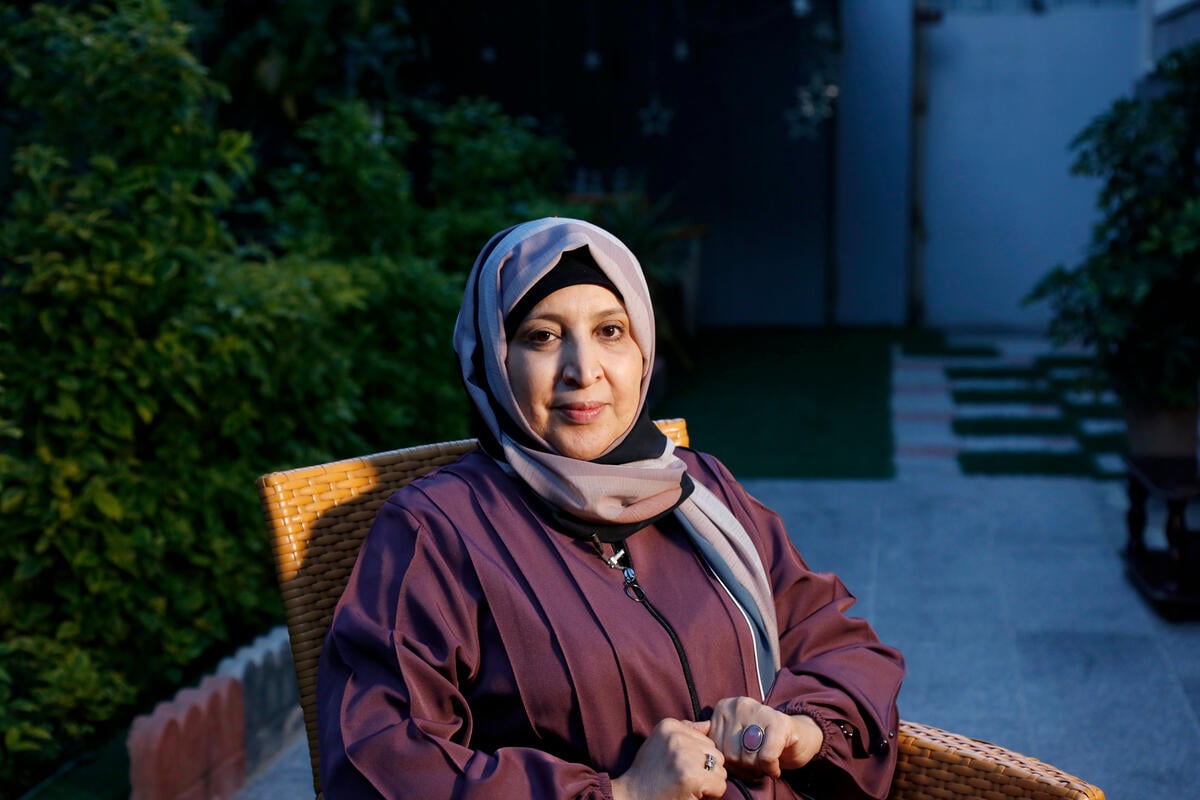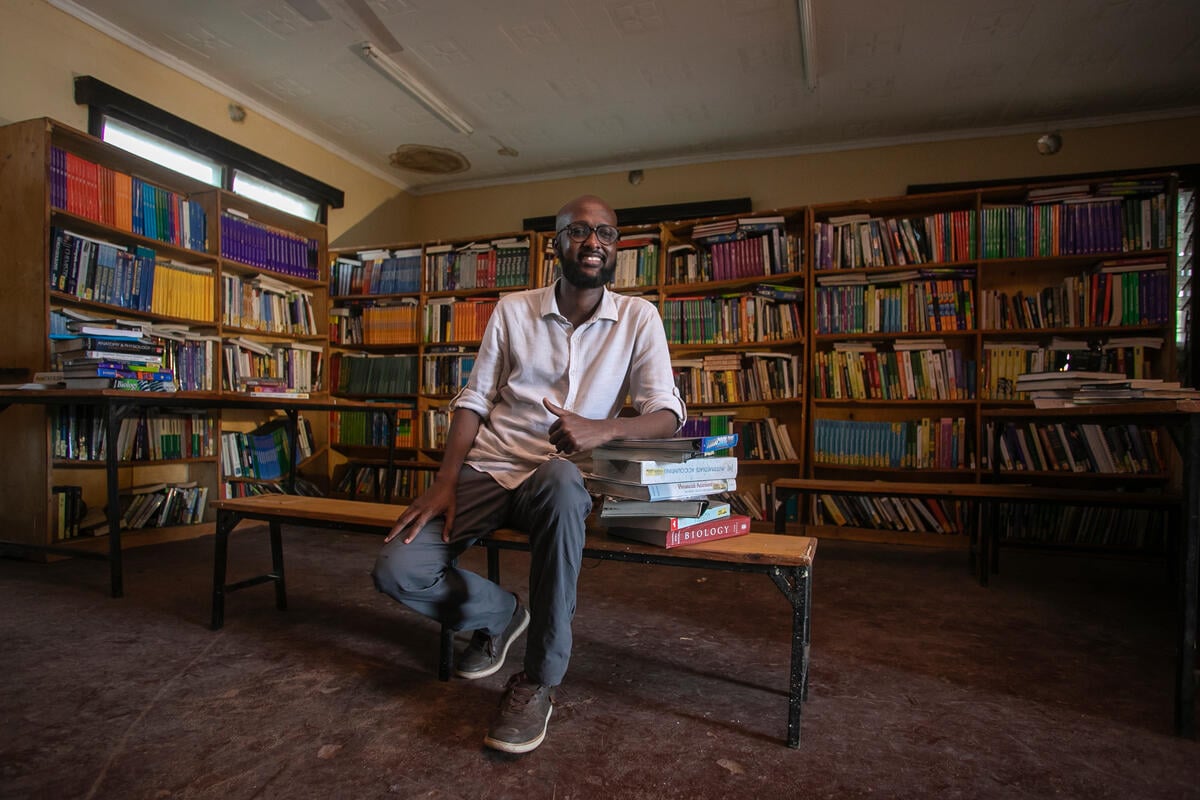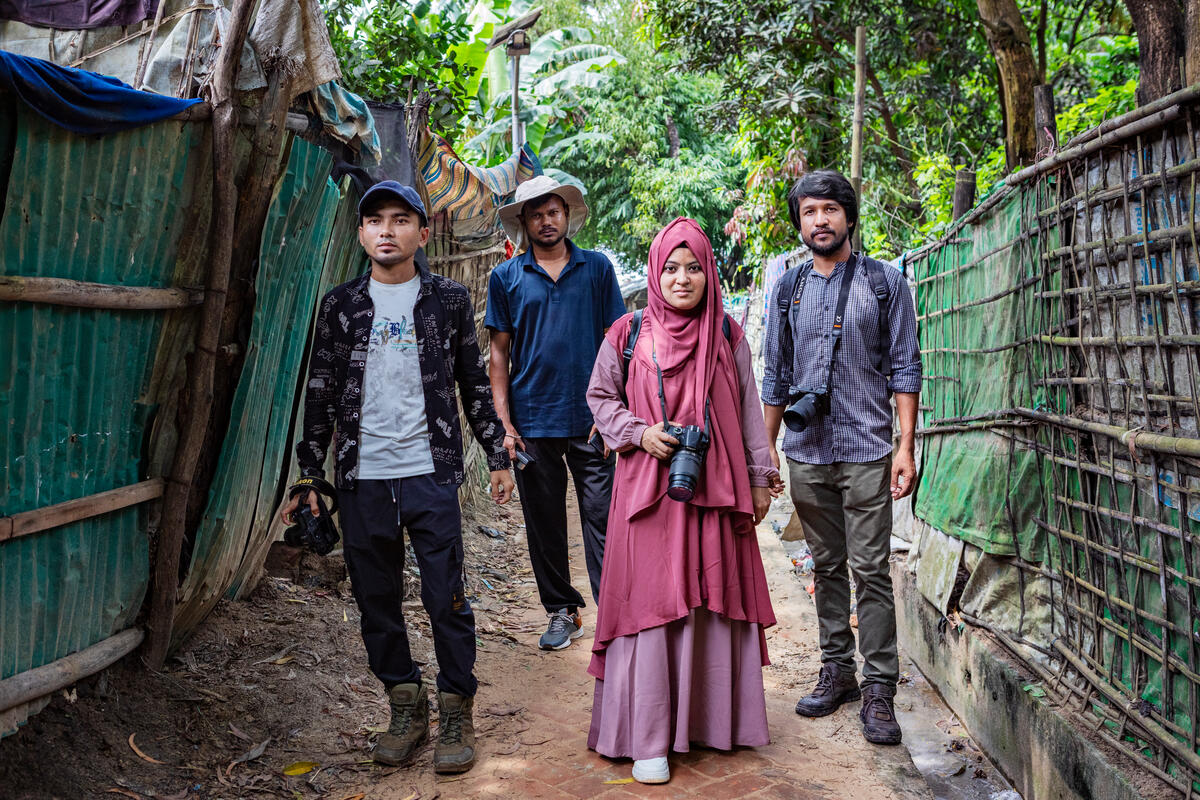Nansen Award: The challenges and rewards of a Lebanese mine clearer
Nansen Award: The challenges and rewards of a Lebanese mine clearer

AITA AL JABAL, Lebanon, September 16 (UNHCR) - Clearing mines or clusterbomb submunitions in southern Lebanon makes Hussam Hijaziya, or Sami as his colleagues call him, feel really good. "I destroyed 310 submunitions [spread by clusterbombs] this year. This means I saved the lives of 310 of my own people," he says, adding: "Each time I destroy a bomb, I feel I am a champion."
But Sami admits that he still gets nervous when going out on a mission for the UN Mine Action Coordination Centre-South Lebanon (UNMACC-SL), whose staff and deminers have won this year's prestigious Nansen Refugee Award for helping displaced Lebanese return home to their homes and land.
"We are dealing with bombs here after all," he notes, while adding: "This is not a game, but when I found my first bomb, I had a feeling I cannot describe."
When he's on duty, Sami leaves his home at six in the morning and heads to the southern Lebanese village of Aita Al Jabal, where he has been stationed since January 2007. From his control centre in an old deserted house, Sami keeps in radio touch with the three teams of mine clearers that he supervises.
The sappers, all civilians and mostly in their 20s, are looking for unexploded ordnance (UXO) - especially bomblets distributed by Israeli-fired clusterbombs in 2006. They search in three areas fenced off by UNMACC-SL and marked as contaminated by clusterbomb submunitions.
"They marked a 44,000-square-metre area in Aita Al Jabal as contaminated. About 7,800 submunitions remain unexploded," explains Sami. The bomblets were fired during the five-week conflict in the south between Israeli forces and Hezbollah militants.
If the centre of the clusterbomb strike is found, Sami's team needs to sweep the 50-diameter area around it in the search for bomblets. When something suspicious is found, it is marked with a red flag. However, searching and marking the bombs is a stressful job that requires intense concentration and patience - one small mistake could prove lethal.
"A searcher might get used to the job, yet, once he gets very familiar with it, he might lose concentration. One day he makes a mistake, the bomblet blows up," says Chris Clark, UNMACC Programme Manager and co-recipient of the Nansen Award.
Mine clearers are only allowed to work in six shifts of 15 minutes each, with a 10-minute break in between. Only a few inches can be cleared after each sweep with the metal detector.
Sami is not the only one who believes the rewards outweigh the risks. "I feel that I have gained the respect of the people, I feel dignity," says 21-year-old Ali Hamzeh, a member of one of Sami's teams. "Although this job is risky, I am happy, especially when I find a bomb. The life I saved could have been the life of my own brother."
Sami's teams work closely with the inhabitants of Aita Al Jabal. Locals come and tell them when they spot a suspicious object on their land, while the mine clearers let everyone know when they are about to destroy munitions with explosives.
"All the villagers here know me and thank me all the time. They always invite me to breakfast or refreshments. They appreciate what we do," says Sami, who once found and destroyed a bomblet located in the local cemetery not long before a funeral was due to take place there.
For Sami, the victims of clusterbombs are a constant reminder of the importance of his job. "Every time I see someone injured by a clusterbomb, I feel that I should have finished my area earlier. There is always more to be done," he says.
By Laure Chedrawi in Aita Al Jabal, Lebanon









